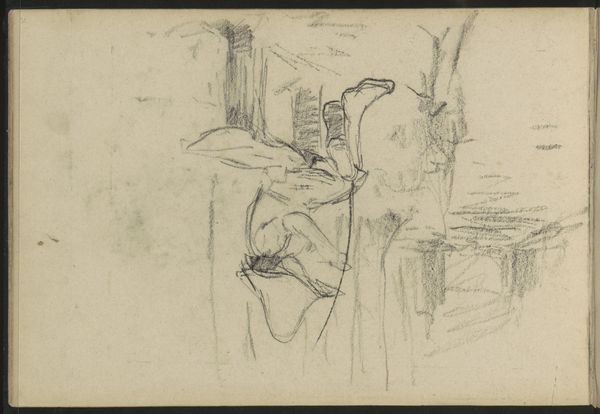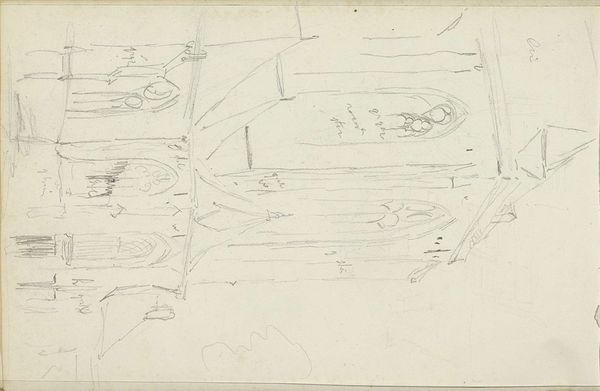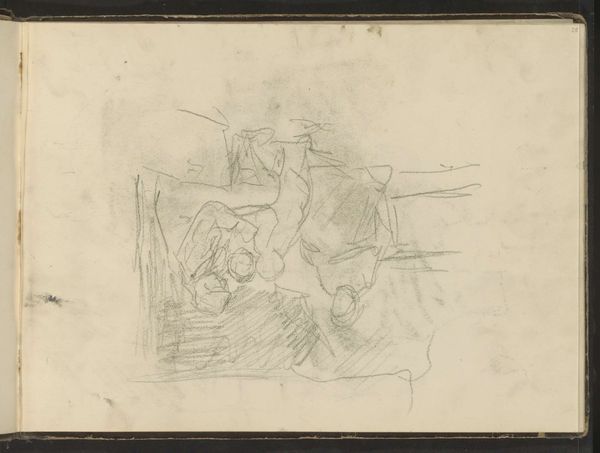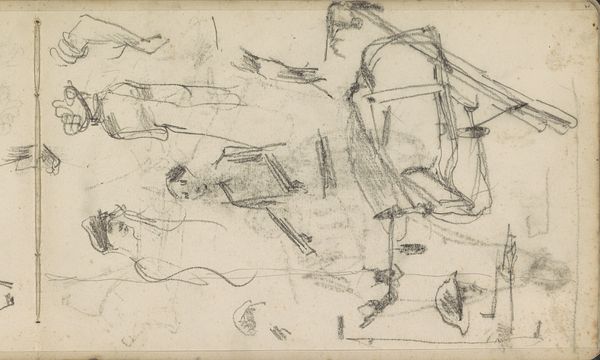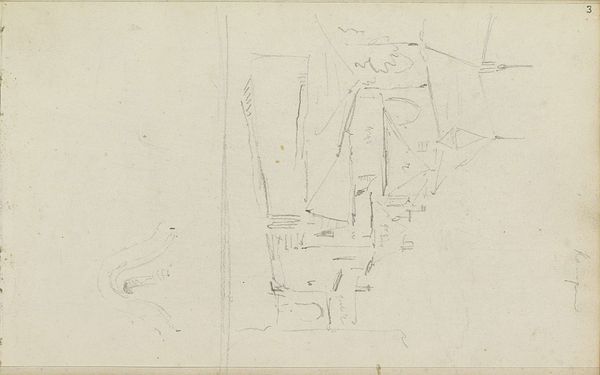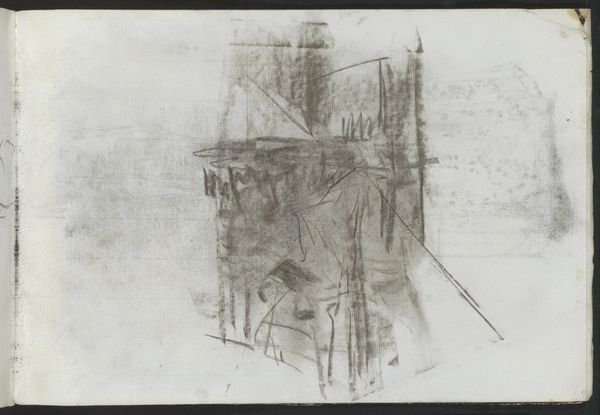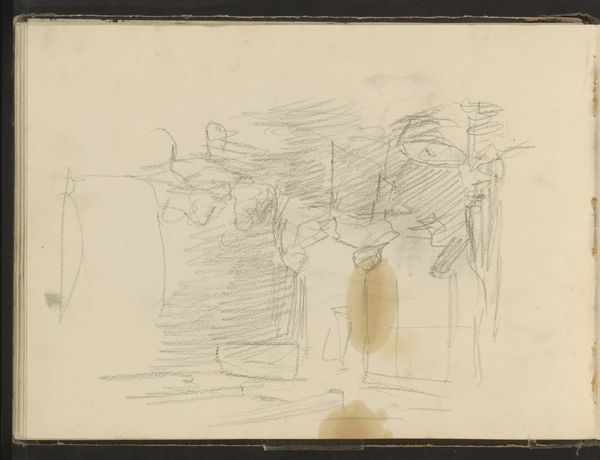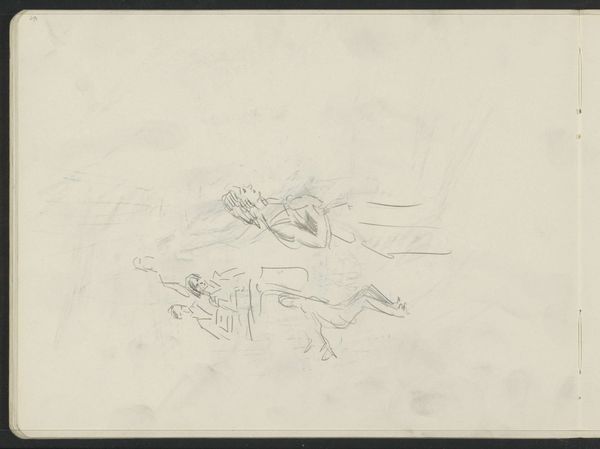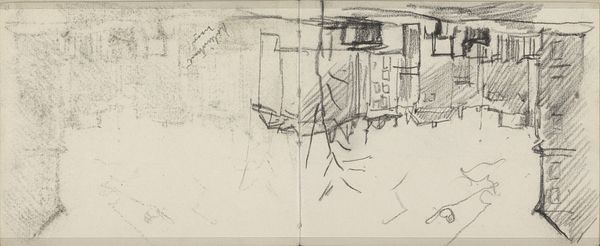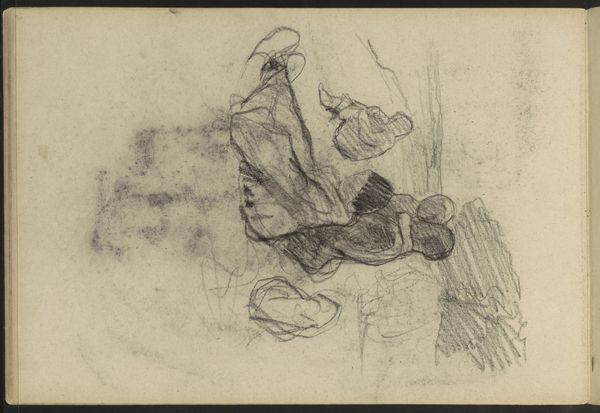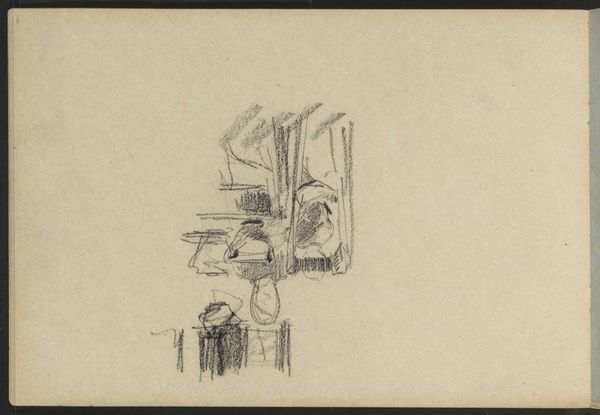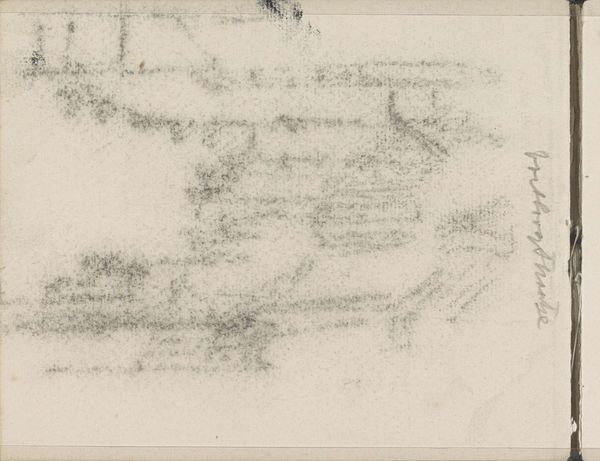
drawing, pencil
#
portrait
#
drawing
#
impressionism
#
pencil sketch
#
figuration
#
pencil
Copyright: Rijks Museum: Open Domain
Curator: What a subtle yet evocative work we have here. This is "Drie zittende kinderen," or "Three Seated Children," a pencil drawing by Willem Witsen, created circa 1884 to 1887, now residing here at the Rijksmuseum. Editor: Immediately, the unfinished nature strikes me. There's an immediacy and vulnerability in the sketchiness of it all. It's less about perfect representation and more about capturing a fleeting moment, a raw emotion. Curator: Indeed. Witsen, who moved in Impressionist circles, had a clear interest in modern life. It appears to capture the everyday reality of children. Considering Witsen’s privileged social standing, how might these renderings intersect with issues of class and childhood representation in art? Editor: It is a great question to address Witsen's positionality. Are these the children of someone known to Witsen or perhaps even hired help within the family. Are these images respectful, exploitive, or simple documentary? This is such a crucial lens to use as we consider the role of artists within social hierarchies. Curator: Exactly. We must examine the political undercurrents—even in seemingly innocuous domestic scenes. Witsen had many ties to folks such as brewing and shipping industrialists, all industries that were gaining speed and societal dominance. To understand this art we need to contextualize this societal reality. Editor: You're spot on. Even the choice of medium—pencil on paper—speaks to accessibility and perhaps a certain casualness of artistic intent. It isn't oil paint on a canvas destined for a salon; it's an intimate glimpse. What could that tell us about the artwork itself and its audience? Is that meant to imply this as a disposable art or as preparatory studies, a piece used to set up other more traditional art forms. Curator: Possibly both. But perhaps it also offers a raw authenticity, stripping away artifice to expose the nuances of social class dynamics at that time. The loose style almost allows the figures to slip away, like fleeting memories. Editor: Right, the incompleteness becomes its strength. A window into an unfinished story, ripe for interpretation and dialogue, challenging the narratives we've inherited. Thank you. Curator: Thank you, it allows us to explore the intricacies of the political landscape, class, gender, and the very nature of art in the late 19th century.
Comments
No comments
Be the first to comment and join the conversation on the ultimate creative platform.
